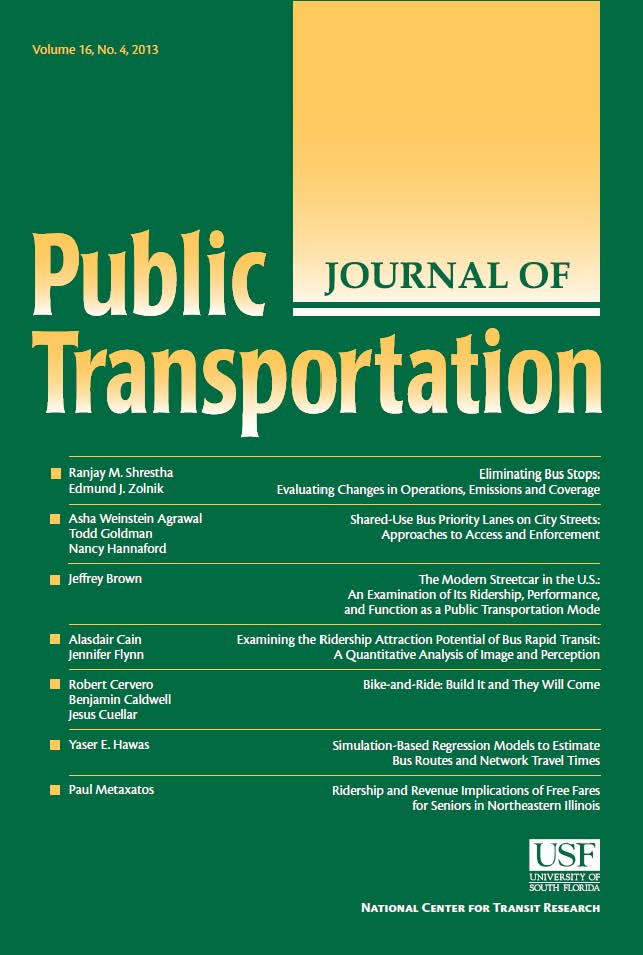轨道交通可达性满意度效应的再评估:地方视角与网络视角的比较
IF 2
4区 工程技术
Q3 TRANSPORTATION
引用次数: 0
摘要
以前的研究将公共交通可达性与旅行满意度联系起来,但大多数研究都集中在当地可达性效应上,很少有研究将其与网络可达性效应进行比较。本研究利用北京轨道交通系统(BRTS)的数据和大规模家庭满意度调查,运用贝叶斯多层次方法检验和比较了地方和网络轨道交通可达性对出行满意度的影响。我们还探讨了这种关系的非线性性质和轨道交通配置的影响。结果表明:1)本地可达性和网络可达性对出行满意度均有显著影响,包括通勤和非通勤出行。本地可访问性比网络可访问性的影响更大。②这种影响是非线性的,在第四个五分位数处达到峰值,从第二个五分位数开始,局部可达性的正向影响明显强于网络可达性。3)环线或非转运站附近的居民往往从可达性改善中获益更多。这些研究结果表明,城市规划者和决策者应该基于车站区域以外的网络可达性来评估交通投资,同时考虑门槛效应和轨道网络设计,以促进交通公平和整体福利。本文章由计算机程序翻译,如有差异,请以英文原文为准。
Re-evaluating the satisfaction effects of rail transit accessibility: A comparison of local and network perspectives
Previous studies have linked public transport accessibility to travel satisfaction, but most focus on local accessibility effects, with limited research comparing these to network accessibility effects. Using data from the Beijing Rail Transit System (BRTS) and a large-scale household satisfaction survey, this study applies a Bayesian multilevel approach to examine and compare the impacts of local and network rail transit accessibility on travel satisfaction. We also explore the nonlinear nature of this relationship and the influence of rail transit configurations. The results show that: 1) Both local and network accessibility have significant effects on travel satisfaction, including for commuting and non-commuting trips. Local accessibility has a stronger impact than network accessibility. 2) The effect is nonlinear, peaking at the fourth quintile, and from the second quintile onward, local accessibility has a clearly stronger positive effect than network accessibility. 3) Residents near ring lines or non-transfer stations tend to benefit more from accessibility improvements. These findings suggest that urban planners and policymakers should evaluate transit investments based on network accessibility beyond just station areas, while accounting for threshold effects and rail network design to promote transport equity and overall welfare.
求助全文
通过发布文献求助,成功后即可免费获取论文全文。
去求助
来源期刊

Journal of Public Transportation
TRANSPORTATION-
CiteScore
6.40
自引率
0.00%
发文量
29
审稿时长
26 days
期刊介绍:
The Journal of Public Transportation, affiliated with the Center for Urban Transportation Research, is an international peer-reviewed open access journal focused on various forms of public transportation. It publishes original research from diverse academic disciplines, including engineering, economics, planning, and policy, emphasizing innovative solutions to transportation challenges. Content covers mobility services available to the general public, such as line-based services and shared fleets, offering insights beneficial to passengers, agencies, service providers, and communities.
 求助内容:
求助内容: 应助结果提醒方式:
应助结果提醒方式:


